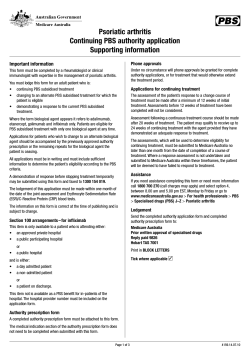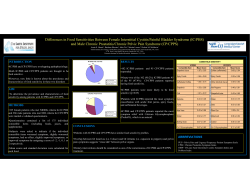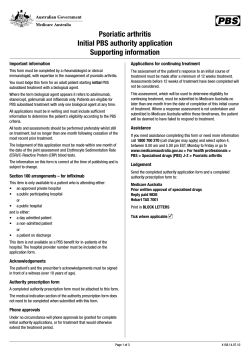
How to catch hantas and other rainbos: aims and methods + boreal PUUV ecology Heikki Henttonen
How to catch hantas and other rainbos: aims and methods + boreal PUUV ecology Heikki Henttonen Finnish Forest Research Institute Rodent‐borne viruses: hanta, arena, cowpox RoBo viruses Rodent‐ and insectivore‐borne viruses Rainbo viruses!!! Thanks to Mike! Methodology for monitoring • What are your aims? • Whar are your resources? • What do you need to know (in minimum)? – Rough feeling of rodent species, density, seroprevalence, viruses present, or – Detailed, longitudinal, frequent, individual‐based monitoring on transmission dynamics • Do not copy your design from elsewhere, but optimize according to your aims, resources and local conditions • In population studies, you can compromise almost in everything else but not in replicates (in a way or another) Do not use laborous/expensive methods if it is not necessary • ”Are there hantaviruses in UK” – Catch quickly and efficiently many locations and big samples Æ snap trapping, freezing animals in field, lab work later using e.g. hearts in PBS. Material OK for blotting and PCR. – Quick dissection in field, blood on paper strips or in PBS, tissues and rest frozen. – And if you find something, then go there to collect fresh materials for cell cultures and other fine tuned operations, e.g. if fresh blood is needed Do not make it too difficult Monitoring approaches Special plague lab in E Kazakstan • Go and hit safaris • Regular, but only once, twice... a year • Intensive longitudinal monitoring of transmission dynamics • Methodology in field, from field to lab, and in lab.... • Scale ‐‐ methods • What is the aim ‐‐ improvise, optimise Somewhere in Siberia We need long‐term monitoring • Can be done in many ways depending on aims and resources • BUT DO IT • Even a simple monitoring once a year is much better than nothing. • Only long‐term monitoring will tell what happens out there • Important events can be rare • You do not see what you are not looking for Landscape structure in boreal zone Line trapping at each site ‐5 forest age classes ‐10 replicate sampling areas in each age class ‐ 6 small quadrats at each site 28 26 24 22 20 18 16 14 12 10 8 6 4 2 0 Non-infected Infected 40 20 0 clearcut 3 to 4 9 to 11 24 to 26 Years since clearcut > 100 PUUV prevalence + 95%CI (%) N of bank voles / 100 trap nights 200 km km 200 Long term live trappings and experiments Lake Pallasjärvi Small quadrat snap trappings in spring and autumn How to replicate? ‐ Study design in a Finnish study “Core” area • 5.8ha • ~250 trap stations • Monthly live‐trapping for 7 years, CMR • Onset of infection can be determined H P N G F "Satellite" areas • 14 sites, landscape level • 0.2ha, 9 trap stations each • Sampled 3 times / year (May, July, October) • Animals removed Minimum distance between areas = 750 metres O E M C B D K A I Design problems – trapping frequency • Delayed density dependence in PUUV ‐ bank vole systems in Europe – time lag from rodent increase to virus spread – suggestions: 6 mo, 3 mo, 1‐2 mo – the solution: – trapping intervals: 6 mo, 3 mo, 1‐2 mo Design your work well to get good results!! (or those you want), or be aware of the limitations of your data Seroprevalence or density... • Depending on biome, PUUV seroprevalence can be seasonal, not density dependent, or vice versa…. • Considering risk for humans, the density of infectious animals is the important parameter and is often density dependent (delayed or direct), but remember limited shedding period Sampling strategies • If the old breeding animals, esp. males, are commonly most infected, should the sampling (trap spacing) concentrate on catching these functional groups? – yes if the target is new parasites/pathogens/biodiv – no if the target is population level analyses etc • Seasonality and infection dynamics – when is the right moment to catch – how does the breeding occur? ‐‐> impact of host population sructure on the infection dynamics Rodent sample flow chart 1. Lung 2.Kidney + Spleen 3. Heart/ blood 1) Freeze in liquid nitrogen or dry ice --> transport frozen to -70°C -Piece in LSB -Piece in TriPure/RNAlater - virus isolation - (retreiving antibodies) 2) Piece in RNAlater (or TriPure) Detect/screen RNA/DNA 3) Piece in Laemmli Sample Buffer (LSB) Screen antigen by WB Screen antibody 1) Heart with blood in separate tube Snap -trapped animals: add 100 ul PBS • IFA, EIA - freeze/ store -20°C or -70°C •microarrays -or let clot/centrifuge--> serum Soak in PBS to elute ab Live animal Cardiac puncture/ saphenous/supraorbital vein) 2) Soak filter paper strip (e.g. 3M, Whatman) in blood, let dry, can be sent via mail (see next slide) 1) Soak a piece of filter paper (3M Whatman, Tervakoski) in blood Out in the field 2) Let dry 3) Store the dried filter paper in e.g. eppendorf tube or in a plastic bag (RT, +4°C or ‐20°C) Back in the laboratory 1) Take a piece (1x1cm) of the dried blood‐ containing filter and cut it further to smaller pieces 2) Soak the filter pieces in 1 ml PBS at a shaker for appr. 2 hours 3) Transfer the diluted blood (now appr. 1:10) into a new tube 4) The sample is now ready for use in e.g. IFA Finnish factory line (Vaheri et al. 2008) Comparison of methods for screening for viral infections in wildlife: A case study on Puumala virus and bank voles H Henttonen, L Voutilainen, M Razzauti, A Plyusnina, ER Kallio, J Laakkonen, J Niemimaa, T Mappes, E Koskela, A Vaheri, O Vapalahti and A Plyusnin Blood on paper strips Tested Positive Prevalence % (95% CI) 115 54 47.0 (38.1–56.0) 99 50 50.5 (40.8–60.2) 115 55 47.8 (38.9–56.9) EIA (Ab) 97 48 49.5 (39.8–59.3) WB (N-protein) 115 58 50.4 (41.4–59.4) RT-PCR (RNA) 115 72 62.6 (53.5–70.9) 128 26 20.3 (14.2–28.2) 100 21 21.0 (14.1–30.1) EIA (Ab) 93 17 18.3 (11.6–27.4) WB (N-protein) 128 28 21.9 (15.5–29.8) RT-PCR (RNA) 100 40 40.0 (30.9–49.8) Method May IFAT whole blood IFAT dried blood IFAT heart + PBS October IFAT whole blood IFAT dried blood Evaluated method May Paper strip IFAT Heart + PBS IFAT EIA Gold standard Whole blood IFAT Whole blood IFAT Whole blood IFAT Whole blood RT-PCR IFAT Immunoblottin RT-PCR g October Paper strip IFAT EIA Whole blood IFAT Whole blood IFAT Whole blood RT-PCR IFAT Immunoblottin RT-PCR g No. samples compared Positive predictive valuea % (95% CI) Negative predictive valueb % (95% CI) 99 98.0 (94.1–100.0) 100.0 (100.0–100.0) 106 100.0 (100.0–100.0) 100.0 (100.0–100.0) 97 95.7 (90.0–100.0) 96.0 (90.6–100.0) 106 100.0 (100.0–100.0) 71.9 (60.3–83.6) 115 100.0 (100.0–100.0) 75.4 (64.3–86.6) 100 95.2 (86.1–100.0) 100.0 (100.0–100.0) 93 88.2 (72.9–100.0) 94.7 (89.7–99.8) 100 100.0 (100.0–100.0) 75.0 (65.5–84.5) 100 100.0 (100.0–100.0) 76.9 (67.6–86.3) a number of true positives / (number of true positives + number of false positives). (sensitivity) b number of true negatives / (number of true negatives + number of false negatives). (specificity) Typical positive and negative human result in POC Puumala IgM rapid test 1. IgM‐positive serum 2. IgM‐negative serum 3. IgM‐positive fingertip blood 4. IgM‐negative fingertip blood The test functions well if the sample has not been frozen ReaScan system ReaScan Reader Reader open Ready for use Result Cross reactivity • Serotests tell that hanta is around, but because of cross reactivity, serotests do not tell the specific hanta strain. Several ag's can react in a serotest ‐‐> cross neutr., PCR/sequencing • In humans, antibodies in the acute phase of disease are not specific, only convalescence sera should be used for cross neutralization to identiy the specific strain. Contamination • Contamination in PCR happens easily, especially if several strains are analysed in the same lab at the same time Spill over (in robo world) • Infection to secondary hosts (e.g. PUUV carried by My. glareolus to sympatric Mi. agrestis, M arvalis, A. sylvaticus), or TULV from M arv. to M agr., or SAAV/DOBV in Apodemus mice • Can secondary host spread the virus? – In sec. host, viremia very short and weak – Induction of antibodies, but no virus found – Virus found but…. • Cross neutralization to analyse (if you have a good set of hanta antigens) ‐ quite demanding • Seropositivity alone can be misleading!! The role of maternal antibodies in hanta dynamics? (Arikawa et al. 1985, 1985, Zhang et al 1988, 1989, Kallio et al, 2006, 2010) • Hantaviruses cause a chronic life‐time infection in rodents though neutralizing antibodies are present • During lactation, the female transfers maternal antibodies to young • We can detect the mat ab's until 2 months but the true protection is up to 3 (4?) months • But how well do we detect them? Age, avidity test… • Seasonally, mat ab's can make a considerable proportion of seropositivity • Transmission processes delayed • Depending on spring density and prevalence, differences in autumn prevalenve between years and cycles? Change in the paradigm: Insectivores march in! (Almost) nothing is known on transmissibility of insectivore hantas humans Sironen et al, in prep. Biome specific epidemiologies Mainly seasonal, but occassional mast driven peaks Extended cyclic high density period S and C Finland 30 Mast year 30 25 25 Density index Density index 20 15 10 5 20 15 10 5 0 0 0 1 2 3 4 5 6 Year Boreal north 7 8 9 0 1 2 3 4 5 Year Temperate 6 7 8 9 Geography of rodent cycles and NE in Finland: rodent surveillance as an early warning system Spatial pattern of vole cycles NE cases in whole Finland Drastic change at the national level in late 1990s due to the change in the geographic synchrony of vole cycles NE dynamics at local scale How many infected bank voles in Nov 2008 in Finland? • Bank vole peak area 100 000 km2 • Exclude lakes and fields Æ 70 000 km2 = 7 000 000 ha of forest. • Conservative estimate 30 bank voles per ha = 210 000 000 bank voles • Seroprevalence in November e.g. 40% • Min 80 000 000 infectious bank voles peeing PUUV in forests of southern Finland Æ • All time NE record! Strange things happen in the Finnish night landscape: 25 km2 study area Northern pattern homogenous lanscape, moisture, long winter, no strong dilution by other species H P N G F O E M C B D K 200 180 Maternal antibodies Susceptible Fresh infections Chronic infections PUUV prevalence A I 100 60 120 100 40 80 60 20 40 20 0 2002 0 2003 2004 2005 2006 2007 2008 2009 PUUV prevalence (%) Number of bank voles 140 N o f P U U V -in fe c te d b a n k v o le s 80 160 60 50 40 30 20 10 0 2 02 3 03 4 04 5 05 6 06 7 07 8 y -0 o v- ay -0 o v- ay -0 o v- ay -0 o v- ay -0 o v- ay -0 o v- ay -0 a M N M N M N M N M N M N M Trapping session Detailed longitudinal surveillance Infected host in the landscape P O N M K I H G F E D C B A Boreal zone: intensive transmission in nonbreeding subadult bank voles in winter Maturation in spring Most of the transmission in autumn and winter among nonbreeding voles. Æ Season for human epidemiology The importance of seasonal and cyclic heterogeneities for parasite parameters in rodent populations • Populations are made of subgroups which differ in age, maturity, behaviour, immunity • Their proportions change bothseasonally and multiannually • "Functional groups" – old breeding 1) males and 2) females – young breeding 3) males and 4) females – 5) subadults, not breeding, have dealyed the maturation to the next year – 6) juveniles, by age juveniles < 4‐5 weeks 1. immediate maturation 2. delayed maturation slow dispersal subadults, nonbreeding, sexes similar overwintering intensive dispersal dispersal with maturation young breeding animals, sexes different regression in winter/ dry season, "subadults" maturation next spring old breeding animals, sexes different Seasonal development of functional groups in a rodent population Behaviour and immunity are related to functional group, not to absolute age as such Come on, get my virus! Immunochromatographic rapid test Sample (5‐10 μl) Buffer (2 drops) Sample pad Conjugate pad Test line Control line Hantavirus nucleocapsidprotein (50 ng) in test line Gold-conjugated rabbit anti-human-IgM antibody or Gold-conjugated rabbit anti-mouse-IgG antibody in conjugate pad Goat anti-rabbit antibody in cntrol line Hantavirus–specific IgM / IgG antibody in sample Unspecific IgM / IgG in sample Mammal species numbers in Europe Higher diversity to south Æ more dilution impact IUCN
© Copyright 2025

















